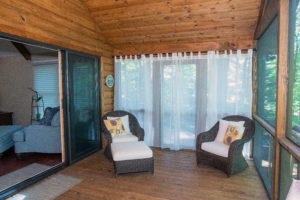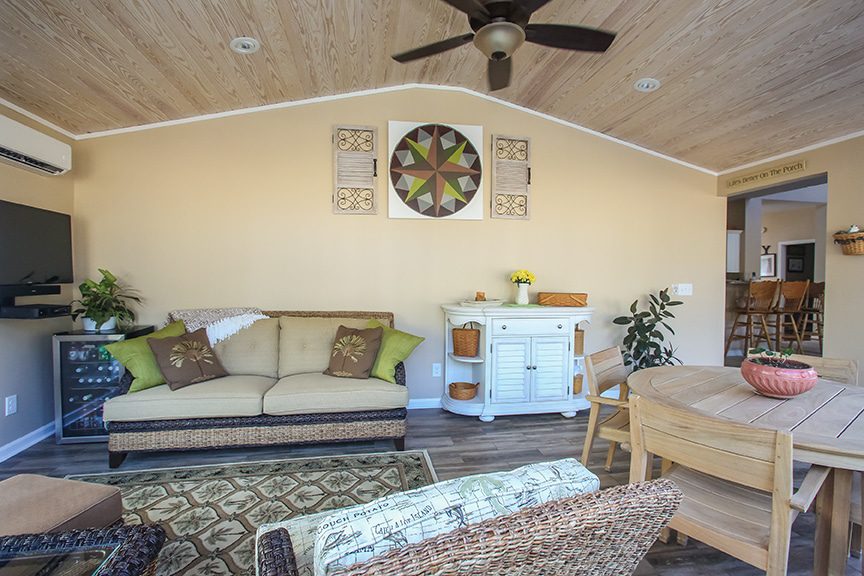Evolving Trends in Home Design
While the world has been in an upheaval over nearly the past year now, people are focusing more than ever on health, family, and their home. 2020 has encouraged trends in home design that emphasize flexibility, cleanliness, and comfort. While spending so much extra time at home, people are realizing what in their home works and what does not.
First of all, there has been a new found need for multi-purpose, or flex, areas in the home. The home has become not only the place we sleep, play and eat, but also the place we work, learn, and {virtually} socialize. Yes, you can set up a work station at the dining room table, but to increase productivity, it’s best to set up a space separate from where you typically ‘live’. A guest bedroom, bonus room, or basement are excellent spaces to set up a home office or home school zone. But try your best not to take your work into your bedroom. Studies have shown that working in the space you are used to sleeping can decrease productivity and even disrupt your sleep patterns at night.
Maybe you don’t have a separate room or basement to utilize. Try getting creative and converting a space in a corner of your living room or dining room, with a fold down desk or secretary bookcase. Be sure to find a space where things can be tucked away when not in use, though. The work-life balance was tough before and even harder now with both activities happening in the same space.
Another trend that 2020 has continued to perpetuate is the focus on cleanliness and easy-to-clean materials. Denser materials like porcelain tile and engineered quartz are more popular than ever. These materials, as opposed to natural stones like travertine, marble, or even granite, are virtually maintenance free and very easy to clean.
Natural stones are porous and should be cleaned, sanitized, and re-sealed more frequently. Porcelain tile is a great material to use for bathrooms, including floors and showers, or floors in other ‘wet’ areas of the home like laundry rooms, mudrooms, and kitchens. Engineered quartz (not the same as the natural stone, called quartzite) is a great material for countertops in the kitchen and bathrooms. Quartz has even come a long way in terms of colors and patterns, now with options that are difficult to distinguish from natural marble or granite.
 With the whole family spending more time at home, another trend that we discussed previously that is continuing to be popular is the expansion of living space to the outdoors. Screened porch and sunroom additions have been extremely popular this year, with outdoor kitchens/bars and decks following close behind. These additions add valuable square footage to the home that can be used, in most cases, year-round. An outdoor living space or addition can serve as a secondary gathering place for friends and family or even a special location for game or movie night. These additional spaces could also be another option for flex space, such as a part-time office or place to do schoolwork. The options for a screened porch or sunroom are endless.
With the whole family spending more time at home, another trend that we discussed previously that is continuing to be popular is the expansion of living space to the outdoors. Screened porch and sunroom additions have been extremely popular this year, with outdoor kitchens/bars and decks following close behind. These additions add valuable square footage to the home that can be used, in most cases, year-round. An outdoor living space or addition can serve as a secondary gathering place for friends and family or even a special location for game or movie night. These additional spaces could also be another option for flex space, such as a part-time office or place to do schoolwork. The options for a screened porch or sunroom are endless.
Comfort has always been an important part of home design. But with more uncertainty in the world these days, the home needs to feel even more like a haven than ever. Hygge, pronounced ‘hoo-gah’, is a Danish term that means a sense of coziness and well-being. The practice of Hygge has been around for a long time and is generally believed to come from the word meaning ‘hug’. When it comes to home design, Hygge refers to the sense of calm, mindfulness, and wellbeing your home can and should bring.
Your home is your refuge, a place for your family to feel happy and safe. This feeling can be brought about by the materials you have in your home: soft, natural fabrics, cushions, bedding, and rugs; warm, natural lighting; and reduced clutter. Of course, everyone’s sense of calm and happiness may look a little different, and that’s OK! The key to Hygge is using mindfulness in selecting materials and choosing items that create a sense of tranquility without too much fuss.
While we can’t control what’s happening in the world, we do have control of our home and the way it makes us feel. Your home should feel like a safe zone and place of comfort. Even though it has even more functions than ever, it should be easy to maintain and bring you joy and a sense of calm.
This article originally appeared in the November 2020 of Lakeside on Lanier. Find it here.

